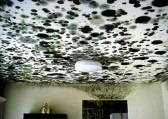Asthma Awareness Month: Avoiding Triggers
Asthma Awareness Month: Avoiding Triggers
Did you know that Asthma affects 3 Million people in Canada, of that, 600,000 are Children?

When we hear the word “Asthma” we often think about “the kid” in school that wasn’t allowed to participate in Phys. Ed. The inhalers, the wheezing, and the restrictions that put a damper on any activity we had planned for the weekend. Yet, how much do you really know about asthma, have you ever sat down and really gone over what types of Asthma there are? What activities should be avoided? What triggers most commonly induce an asthma attack?
There are two types of Asthma triggers Inflammatory (Allergenic) and Symptom (Non-Allergenic)
Inflammatory triggers cause the lungs’ airways to inflame or the muscles in the airways to tighten.
The most common inflammatory triggers are:
 Viral Infections:
Viral Infections:
The Common Cold and some Flu Viruses can make those with Asthma more susceptible to asthma triggers or even cause an episode (asthma attack).
 Animals:
Animals:
People often think that the fur or feathers of an animal are the causes of an asthma attack, however, it is actually pet dander, oil secretions, saliva and even urine or feces that can be the trigger an attack. Approximately 50% of children encounter inflammatory complications due to pets.
 Molds:
Molds:
Mold is commonly produced in areas that are damp and where air flow is limited, Mold can become airborne by (but not limited to) opening a door, human contact, and traveling through the HVAC system. Mold spores can uproot and redeposit to a nutrient thus forming a new contamination. These mold spores float through the air and are easily inhaled.
 Pollen:
Pollen:
Commonly generated by trees, flowers, grass and weeds, pollen is a common trigger for people with Asthma as it is inhaled freely, the highest effects during the warmer months.
 Cockroaches:
Cockroaches:
Arguably, the scariest creatures on planet earth, definitely a nuisance when talking about Asthma. These annoying little guys defecate wherever their little heart’s desire, which can end up in your food and will trigger an asthmatic response.
 Dust Mites:
Dust Mites:
These spider-like creations enjoy living in soft places like your bedroom pillows or mattresses, sofas, and carpets. They commonly nourish their bodies with human shed skin. Their fecal matter and body parts can produce adverse asthma effects.
Symptom triggers do not cause inflammation; rather provoke airways causing problems, especially if the airways are already inflamed.
The most common of these Symptom triggers are:
 Smoke:
Smoke:
We all know that smoking is bad for our health, having asthma, makes it even more dangerous, tobacco smoke, including second hand smoke, is an extreme trigger for Asthmatic people, more importantly , children exposed to smoke are more likely to have an attack
 Exercise:
Exercise:
In poorly controlled asthma, airways are sensitive to humidity and temperature changes more predominantly when breathing cold, dry air. Diagnosing Exercise Induced Asthma, is completed by a test called Spirometry where breathing is measured when at rest and after exercise, if there is a decrease of air flow, it is an indication of EIA.
 Air Pollutants:
Air Pollutants:
Although it is not proven that Air Pollutants factor into Asthma related attacks the increase of attacks during High Air Quality Health Index warnings suggests the correlation.
 Cold Air:
Cold Air:
Rapid changes in weather when cold air is introduced can also trigger an attack. Breathing through your nose to warm the air before it reaches the lungs could help in reducing the effects.
With smog, pollution and severe climate changes one may consider that more triggers would be encountered while outdoors, however the opposite is true. Most triggers happen indoors, Canadians spend a great deal of time indoors, in fact, 90% of their time. High quality, indoor air testing is a highly effective way of reducing many triggers. Proper ventilation of the home, vacuuming with a high quality Hepa filter and managing your asthma with the help of your family doctor are imperative to living a long and healthy life.

Follow Us!